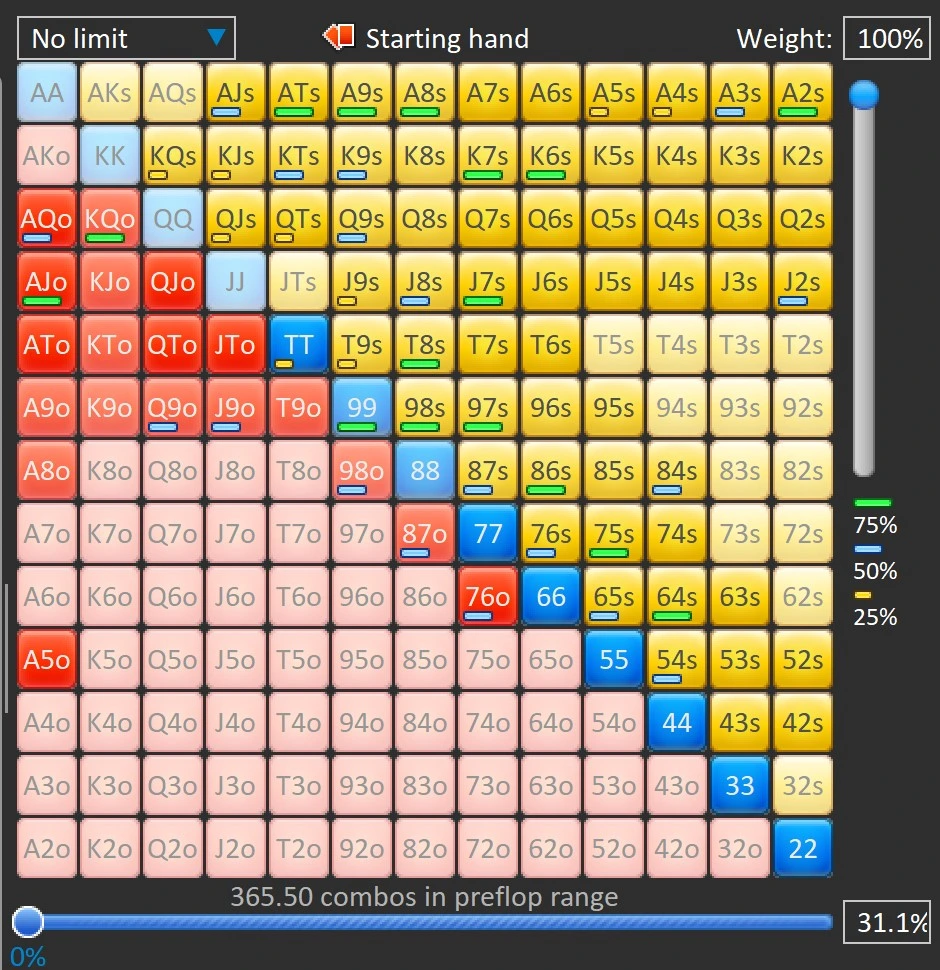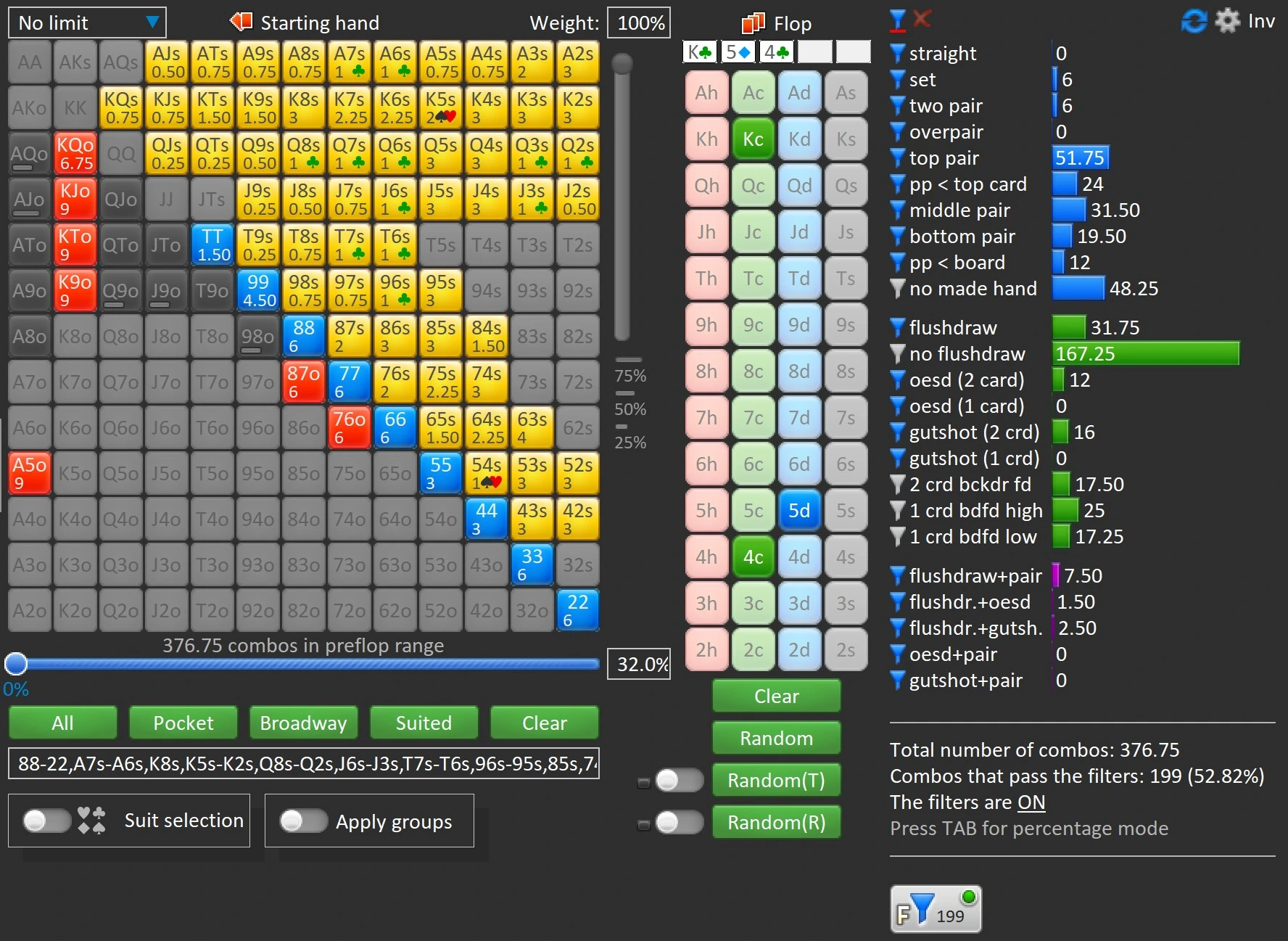Narrow Down the Range at the Turn

Apr 22, 2025
•
2 min read
Unless your opponent is especially bad, you should strive to put them on a range of hands and then narrow that range as play progresses based on their action.
– Jonathan Little
In the last chapter, we focused on mastering the flop, from assessing your advantage to planning for future streets. With those foundations in place, we now move to the penultimate street in poker: the turn.
Join us as we cover the most important skill professionals use to make money on third street, narrowing their opponent’s poker hand range.
Ready? Let’s dive in!
What is Range in Poker?
A poker hand range refers to all the possible hole-cards a player might have at any stage in a poker hand. ****Successful poker players make decisions based on all the possible hands their opponents may have. They even consider how their opponents perceive their holdings.
Ranges Funnel Down on the Turn
After almost every single flop, a player will have fewer combinations of hole-cards in their poker hand range than at the start. So, here’s how to calculate poker ranges once the turn hits: ask what value, bluffs, and bluff catchers do on the flop.
For example, let’s consider a common scenario where button opens preflop and big-blind defends. In almost all cases, big-blind checks to the PFR. This action does not narrow big-blind’s poker hand range as their weak, medium, and strong hands choose this play.
Now consider what button’s actions signify. On most flops, save for the few way better for big-blind, we expect a c-bet. We cannot yet narrow button’s range. When button misses a c-bet though, we can reach certain conclusions.
When the button c-bets, the big blind's response provides valuable information. A call suggests bluff-catchers and draws, while a check-raise indicates strong value hands (e.g., two-pair or better) or robust draws like open-enders, flush draws, or combo draws.
Use Poker Tools
Working with flop-visualizers or solvers, we can get an off-table look at how ranges narrow down on turns based on flop actions. We recommend using your poker tools to study how action histories influence a poker hand range.

👉 The above range shows what big-blind defends with preflop. The range below shows the hands big-blind will continue with when facing a flop c-bet. Some of the best hands and draws might even check-raise!

Conclusion
In closing, flop actions reduce hole-card combinations in a poker hand range from its preflop starting point to a more well-defined state once the fourth community card hits.
Professionals discount combos unlikely to take the actions that were taken from their villain’s range. Off-table exercises with equity calculators, range visualizers, and even solvers help us understand how flop actions narrow a range.
What you should keep in mind is: Use hand action histories to improve your hand reading while playing. That’s it.
Best of luck, grinders!
ZOOM IN
The following links are recommended resources related to this section’s theme. Don’t stay in doubt--dive in! 🔔
- Ranges: Learn how to calculate & use poker ranges.
- C-Bets: You may want to check this continuation bet guide.
- Action History: Learn how knowing action history improves your bottom-line.
- Betting: Learn more about how to bet in poker.
- Discord Community: Join the coolest poker community, don’t be shy! Use it to ask questions and interact with other poker enthusiasts and professionals.